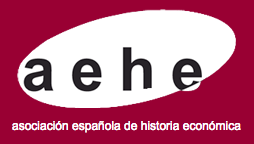El Estado y la industria del calzado en Francia en el siglo xx. La definición de una escala territorial para la coordinación entre los poderes públicos y las empresas
DOI:
https://doi.org/10.1016/j.ihe.2010.12.001Palabras clave:
Calzado, Estado, PYME, Distritos industriales, N4, N44, N6, N64Resumen
El tema de los distritos industriales surgió en las ciencias sociales en los años setenta, cuando la crisis económica hizo dudar del modelo de organización fordista. Los poderes públicos franceses buscaron entonces una alternativa en las PYME y los distritos industriales. Vista en el largo plazo, esta actuación pública se inscribe dentro del papel económico y social movilizador adoptado por el Estado francés durante el siglo xx. Este artículo analiza las vías seguidas por las políticas públicas para optimizar la movilización de los recursos. El problema planteado se sitúa en la encrucijada de la historia económica y la sociología de la acción pública. El enfoque se ha realizado a través del ejemplo de la industria del calzado, que ha conocido dos tipos de configuración: concentración geográfica de PYME y concentración económica en grupos industriales. El trabajo pone de manifiesto que el Estado, en su búsqueda de apoyos para garantizar su control sobre la economía, se ha visto obligado a tener en cuenta las reconfiguraciones del sistema productivo, sin conseguirlo siempre.Descargas
Descargas
Cómo citar
Número
Sección
Licencia
Aquellos autores/as que tengan publicaciones con esta revista, aceptan los términos siguientes
- Los autores/as conservarán sus derechos de autor y garantizarán a la revista el derecho de primera publicación de su obra, el cuál estará simultáneamente sujeto a la Licencia de reconocimiento de Creative Commons Reconocimiento-No comercial-Sin obra derivada 4.0 Internacional que permite a terceros compartir la obra siempre que se indique su autor y su primera publicación esta revista, y no permite hacer uso comercial de la misma ni tampoco obras derivadas.
- Los autores/as podrán adoptar otros acuerdos de licencia no exclusiva de distribución de la versión de la obra publicada (p. ej.: depositarla en un archivo telemático institucional o publicarla en un volumen monográfico) siempre que se indique la publicación inicial en esta revista.
Plagio y fraude científico
La publicación de un trabajo que atente contra los derechos de propiedad intelectual será responsabilidad de los autores/as, que serán los que asuman los conflictos que pudieran tener lugar por razones de derechos de autor. Los conflictos más importantes pueden darse por la comisión de plagios y fraudes científicos.
Se entiende por plagio:
- Presentar el trabajo ajeno como propio.
- Adoptar palabras o ideas de otros autores sin el debido reconocimiento.
- No emplear las comillas u otro formato distintivo en una cita literal.
- Dar información incorrecta sobre la verdadera fuente de una cita.
- El parafraseo de una fuente sin mencionar la fuente.
- El parafraseo abusivo, incluso si se menciona la fuente.
Las prácticas constitutivas de fraude científico son las siguientes:
- Fabricación, falsificación u omisión de datos y plagio.
- Publicación duplicada.
- Conflictos de autoría.





